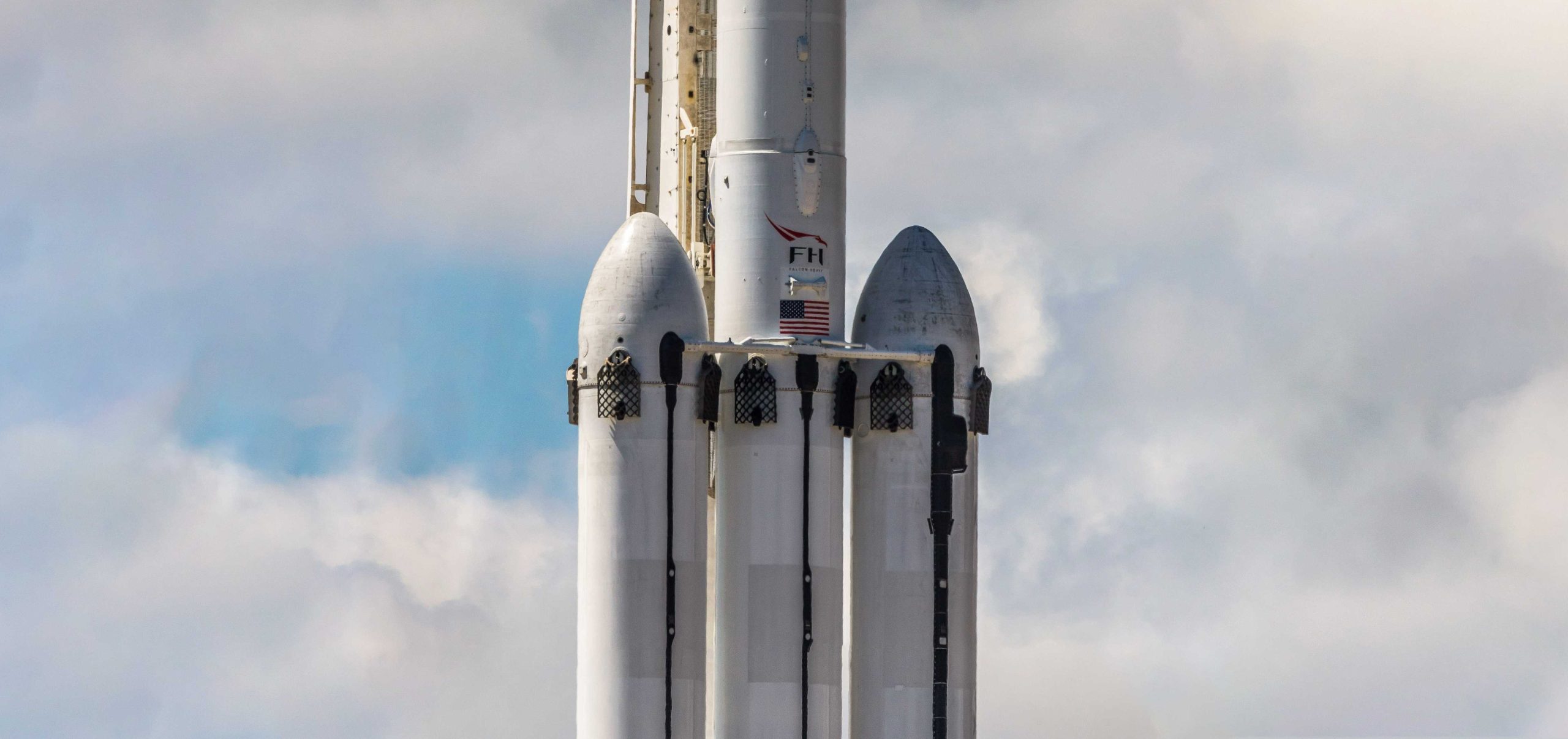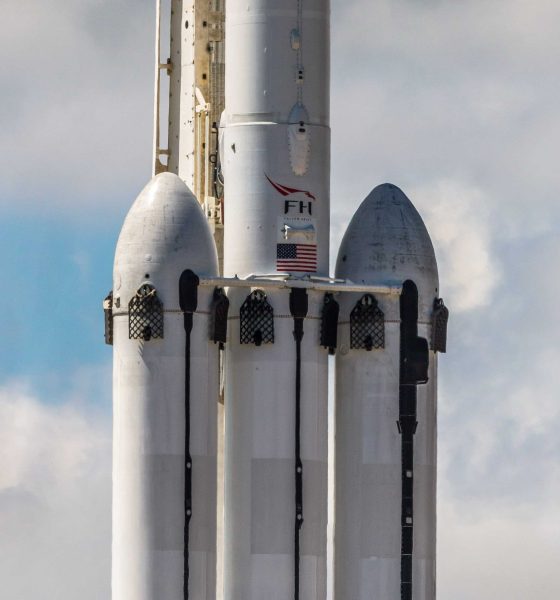NASA says that its mission to the asteroid 16 Psyche will no longer be able to launch in 2022 after engineers were unable to verify the readiness of the spacecraft’s software.
What could amount to being a few weeks or months behind schedule will have major ramifications for the mission, extending its cruise phase – the time between launch and arrival at Psyche – by years. On top of significantly increasing Psyche’s overall cost, the delay means that yet another payload meant to launch on SpaceX’s Falcon Heavy rocket in 2022 (or earlier will) has slipped to 2023.
For years before its debut, Falcon Heavy itself was indefinitely delayed as SpaceX priorities and technology constantly shifted around it. Even after the first version of Falcon Heavy finally debuted in February 2018, SpaceX chose to immediately upgrade the rocket to use the latest Falcon Block 5 variant, which again experienced months of delays.
A bit less than a year behind schedule, the first upgraded Falcon Heavy successfully completed the rocket’s first commercial mission – Arabsat 6A – in April 2019. The second Falcon Heavy Block 5 followed suit in June 2019 with a rideshare mission that doubled as a complex test flight that ultimately allowed the US military to certify the rocket to launch its most valuable satellites. The rocket has not launched once since. As previously discussed on Teslarati, virtually every spacecraft manifested on Falcon Heavy since the rocket’s first three launches has experienced major delays.
“For unknown reasons, virtually every near-term Falcon Heavy payload has slipped significantly from its original launch target. Within the last few weeks, USSF-44 – meant to launch as early as June 2022 after years of delays – was “delayed indefinitely.” Delayed from Q3 2020, USSF-52 is now scheduled to launch in October 2022. ViaSat-3, once meant to launch on Falcon Heavy in 2020, is now NET September 2022. Jupiter-3, a record-breaking communications satellite that wasn’t actually confirmed to be a Falcon Heavy launch contract until a few weeks ago, recently slipped from 2021 and 2022 to early 2023.”
Teslarati.com – May 26th, 2022
Just a month later, USSF-44 is now NET December 2022, USSF-52 has reportedly slipped to April 2023, and Psyche has slid to July 2023. At least for now, ViaSat-3, USSF-67, and USSF-44 are still targeting 2022 launches, but it will take a minor miracle and the abrupt end of patterns of delays for even one of those missions to avoid slipping into 2023 over the next 3-6 months.
As a result, SpaceX continues to accumulate an increasingly absurd fleet of unflown Falcon Heavy boosters that were manufactured and tested for launch targets that are now years behind schedule. The company is now storing nine different Falcon Heavy side and center cores, one of which supported Falcon Heavy Block 5’s first two 2019 launches and the other eight of which are qualified for flight but have never flown. The grounded fleet may soon grow to 10 boosters, compared to the 11 or fewer active Falcon 9 boosters SpaceX will likely end the year with.
Due to the nature of interplanetary launch windows and destinations, Psyche will be a particularly painful delay for NASA. The August to October 2022 window NASA was recently targeting would have allowed the 2.6 ton (~5700 lb) spacecraft to enter orbit around 16 Psyche in early 2026. According to NASA, the best possible backup launch window in 2023 will now delay orbital insertion to 2029 or even 2030, effectively doubling the Psyche spacecraft’s cruise time. According to a 2022 decadal survey, the cruise phases of missions of a similar class have cost at least $30 million per year, meaning that Psyche’s 2022 to 2023 launch delay could easily cost NASA an extra $100 million.

News
Tesla FSD v14.2.2 is getting rave reviews from drivers
So far, early testers have reported buttery-smooth drives with confident performance, even at night or on twisty roads.

Tesla Full Self-Driving (Supervised) v14.2.2 is receiving positive reviews from owners, with several drivers praising the build’s lack of hesitation during lane changes and its smoother decision-making, among others.
The update, which started rolling out on Monday, also adds features like dynamic arrival pin adjustment. So far, early testers have reported buttery-smooth drives with confident performance, even at night or on twisty roads.
Owners highlight major improvements
Longtime Tesla owner and FSD user @BLKMDL3 shared a detailed 10-hour impression of FSD v14.2.2, noting that the system exhibited “zero lane change hesitation” and “extremely refined” lane choices. He praised Mad Max mode’s performance, stellar parking in locations including ticket dispensers, and impressive canyon runs even in dark conditions.
Fellow FSD user Dan Burkland reported an hour of FSD v14.2.2’s nighttime driving with “zero hesitations” and “buttery smooth” confidence reminiscent of Robotaxi rides in areas such as Austin, Texas. Veteran FSD user Whole Mars Catalog also demonstrated voice navigation via Grok, while Tesla owner Devin Olsen completed a nearly two-hour drive with FSD v14.2.2 in heavy traffic and rain with strong performance.
Closer to unsupervised
FSD has been receiving rave reviews, even from Tesla’s competitors. Xpeng CEO He Xiaopeng, for one, offered fresh praise for FSD v14.2 after visiting Silicon Valley. Following extended test drives of Tesla vehicles running the latest FSD software, He stated that the system has made major strides, reinforcing his view that Tesla’s approach to autonomy is indeed the proper path towards autonomy.
According to He, Tesla’s FSD has evolved from a smooth Level 2 advanced driver assistance system into what he described as a “near-Level 4” experience in terms of capabilities. While acknowledging that areas of improvement are still present, the Xpeng CEO stated that FSD’s current iteration significantly surpasses last year’s capabilities. He also reiterated his belief that Tesla’s strategy of using the same autonomous software and hardware architecture across private vehicles and robotaxis is the right long-term approach, as it would allow users to bypass intermediate autonomy stages and move closer to Level 4 functionality.
News
Elon Musk’s Grok AI to be used in U.S. War Department’s bespoke AI platform
The partnership aims to provide advanced capabilities to 3 million military and civilian personnel.

The U.S. Department of War announced Monday an agreement with Elon Musk’s xAI to embed the company’s frontier artificial intelligence systems, powered by the Grok family of models, into the department’s bespoke AI platform GenAI.mil.
The partnership aims to provide advanced capabilities to 3 million military and civilian personnel, with initial deployment targeted for early 2026 at Impact Level 5 (IL5) for secure handling of Controlled Unclassified Information.
xAI Integration
As noted by the War Department’s press release, GenAI.mil, its bespoke AI platform, will gain xAI for the Government’s suite of tools, which enable real-time global insights from the X platform for “decisive information advantage.” The rollout builds on xAI’s July launch of products for U.S. government customers, including federal, state, local, and national security use cases.
“Targeted for initial deployment in early 2026, this integration will allow all military and civilian personnel to use xAI’s capabilities at Impact Level 5 (IL5), enabling the secure handling of Controlled Unclassified Information (CUI) in daily workflows. Users will also gain access to real‑time global insights from the X platform, providing War Department personnel with a decisive information advantage,” the Department of War wrote in a press release.
Strategic advantages
The deal marks another step in the Department of War’s efforts to use cutting-edge AI in its operations. xAI, for its part, highlighted that its tools can support administrative tasks at the federal, state and local levels, as well as “critical mission use cases” at the front line of military operations.
“The War Department will continue scaling an AI ecosystem built for speed, security, and decision superiority. Newly IL5-certified capabilities will empower every aspect of the Department’s workforce, turning AI into a daily operational asset. This announcement marks another milestone in America’s AI revolution, and the War Department is driving that momentum forward,” the War Department noted.
News
Tesla FSD (Supervised) v14.2.2 starts rolling out
The update focuses on smoother real-world performance, better obstacle awareness, and precise end-of-trip routing, among other improvements.

Tesla has started rolling out Full Self-Driving (Supervised) v14.2.2, bringing further refinements to its most advanced driver-assist system. The new FSD update focuses on smoother real-world performance, better obstacle awareness, and precise end-of-trip routing, among other improvements.
Key FSD v14.2.2 improvements
As noted by Not a Tesla App, FSD v14.2.2 upgrades the vision encoder neural network with higher resolution features, enhancing detection of emergency vehicles, road obstacles, and human gestures. New Arrival Options let users select preferred drop-off styles, such as Parking Lot, Street, Driveway, Parking Garage, or Curbside, with the navigation pin automatically adjusting to the user’s ideal spot for precision.
Other additions include pulling over for emergency vehicles, real-time vision-based detours for blocked roads, improved gate and debris handling, and extreme Speed Profiles for customized driving styles. Reliability gains cover fault recovery, residue alerts on the windshield, and automatic narrow-field camera washing for new 2026 Model Y units.
FSD v14.2.2 also boosts unprotected turns, lane changes, cut-ins, and school bus scenarios, among other things. Tesla also noted that users’ FSD statistics will be saved under Controls > Autopilot, which should help drivers easily view how much they are using FSD in their daily drives.
Key FSD v14.2.2 release notes
Full Self-Driving (Supervised) v14.2.2 includes:
- Upgraded the neural network vision encoder, leveraging higher resolution features to further improve scenarios like handling emergency vehicles, obstacles on the road, and human gestures.
- Added Arrival Options for you to select where FSD should park: in a Parking Lot, on the Street, in a Driveway, in a Parking Garage, or at the Curbside.
- Added handling to pull over or yield for emergency vehicles (e.g. police cars, fire trucks, ambulances).
- Added navigation and routing into the vision-based neural network for real-time handling of blocked roads and detours.
- Added additional Speed Profile to further customize driving style preference.
- Improved handling for static and dynamic gates.
- Improved offsetting for road debris (e.g. tires, tree branches, boxes).
- Improve handling of several scenarios, including unprotected turns, lane changes, vehicle cut-ins, and school buses.
- Improved FSD’s ability to manage system faults and recover smoothly from degraded operation for enhanced reliability.
- Added alerting for residue build-up on interior windshield that may impact front camera visibility. If affected, visit Service for cleaning!
- Added automatic narrow field washing to provide rapid and efficient front camera self-cleaning, and optimize aerodynamics wash at higher vehicle speed.
- Camera visibility can lead to increased attention monitoring sensitivity.
Upcoming Improvements:
- Overall smoothness and sentience.
- Parking spot selection and parking quality.










